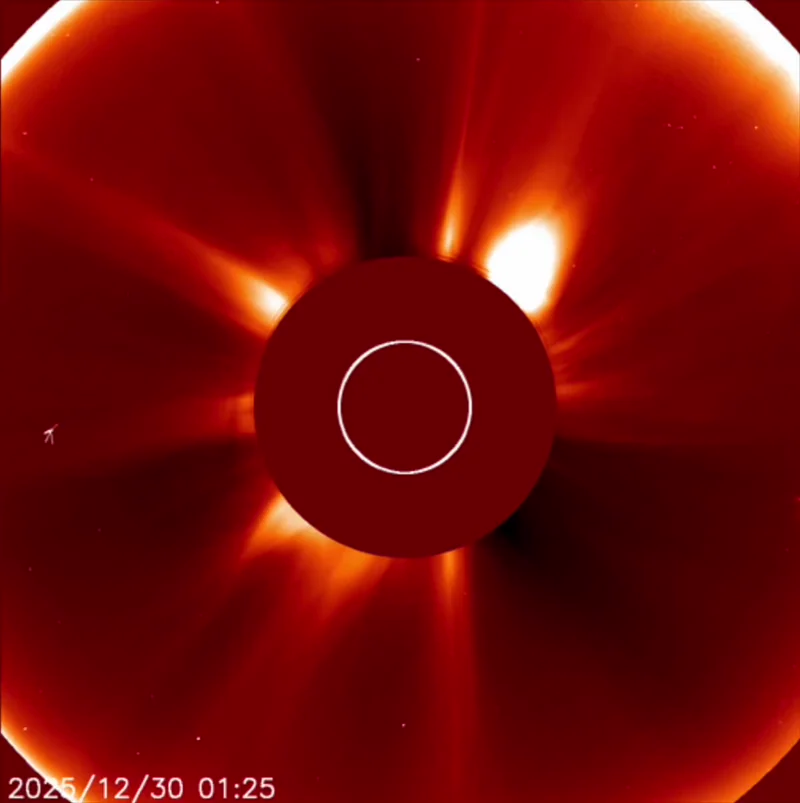
Sun news January 6: Venus is beyond the sun today
(11 UTC January 5 – 11 UTC January 6)
Today’s top story: Venus reaches superior conjunction today. That is, the planet is currently on the opposite side of the sun from Earth, forming a nearly straight line with us and our star. We’ve been watching Venus move through the field of view of the sun-observing SOHO spacecraft’s LASCO C3 instrument over recent weeks. Eventually it slipped behind the coronagraph’s occulting disk, which blocks the glare of the sun. But thankfully, SOHO’s C2 coronagraph lets us see even closer to the sun, revealing Venus as it reaches its striking superior conjunction. Plus, we’ve been able to see Mars approach from the opposite side, heading toward its own superior conjunction on Friday.
Read more: Venus superior conjunction (most behind the sun) today
Past 24 hours: The details
- Flare activity: Over the past day, solar activity stayed at low levels. The sun produced only C-class (common) flares, with 10 events observed during the period.
- Strongest flare: A C4.0 flare from AR4323 peaked at 7:54 UTC on January 6, 2026.
- Lead flare producer: AR4323, located in the southwest, led flare production by generating four C-class flares, including the strongest of the period.
- Sunspot regions: Currently, six numbered active regions face Earth. Overall, all regions maintain simple magnetic structures.
- AR4323 (beta) showed slight decay, yet it remained the most active flare producer today.
- AR4324 (beta) produced a single C1.6 flare during the period.
- AR4325 (beta) lost its earlier gamma configuration and did not produce flares during the period.
- AR4333 (beta) also showed slight decay and generated one C3.4 flare.
- AR4334 (beta) maintained a simple configuration and remains the largest region on the visible solar disk.
- AR4336 (beta) evolved from an alpha to a beta configuration and produced one C2.3 flare.
- In addition, several small regions and plage areas remained quiet and contributed little to overall flare activity.
- Blasts from the sun? Observers noted a filament eruption in the southwest, associated with a C3.4 flare from AR4333. SOHO’s LASCO C2 coronagraph detected the event at 18:57 UTC. Forecasters are now modeling the eruption to determine whether any material is Earth-directed.
- Solar wind: The solar wind gradually slowed, dropping from near 450 km/s to about 350 km/s. At 10 UTC on January 6, speeds measured 379 km/s. Meanwhile, the interplanetary magnetic field (IMF) ranged between 5–8 nT before settling closer to 5 nT. The north–south component, Bz, stayed mostly southward, fluctuating between 0 and –5 nT. This orientation allowed some solar wind energy to couple into Earth’s magnetic field. Even so, conditions only modestly favored auroras at high latitudes and remained insufficient for significant mid-latitude displays.
- Earth’s magnetic field: Earth’s magnetic field remained quiet to unsettled, with no geomagnetic storms observed. Kp values ranged from 0 to 3, with Kp = 0 at the time of writing (11 UTC on January 6).
What’s ahead? Sun–Earth forecast
- Flare activity forecast: Looking ahead, solar activity is expected to remain low to moderate. Forecasters estimate a 40% chance of M-class (moderate) flares. This outlook mainly reflects activity from AR4323 and the evolving regions AR4325 and AR4336. There is also a small (10%) chance of an X-class (strong) flare. However, since no region currently shows a clear delta configuration, such an event would be unexpected.
- Geomagnetic activity forecast:
- 6 Jan 2026: Geomagnetic conditions are expected to be mostly quiet globally, with Kp generally 0–2.
- 7 Jan 2026: Similar conditions are forecast, with geomagnetic activity remaining quiet to occasionally unsettled (Kp 1–3).
- 8 Jan 2026: Quiet-to-unsettled conditions (Kp 1–3) are again expected as Earth remains in slow solar wind. However, change is on the horizon: by late January 8 into January 9, Earth is forecast to connect to a faster stream from a mid-latitude coronal hole. This will likely increase solar wind speeds, raising geomagnetic activity to unsettled-to-active levels, with a chance of G1 (minor) geomagnetic storm intervals.
- 9 Jan 2026 (early outlook): The coronal hole’s high-speed stream could bring Kp up into the 4–5 range. If Kp reaches 5, auroras may become visible from locations such as Seattle, Minneapolis and the Scottish Highlands, and possibly as far south as northern England and New Zealand’s South Island.
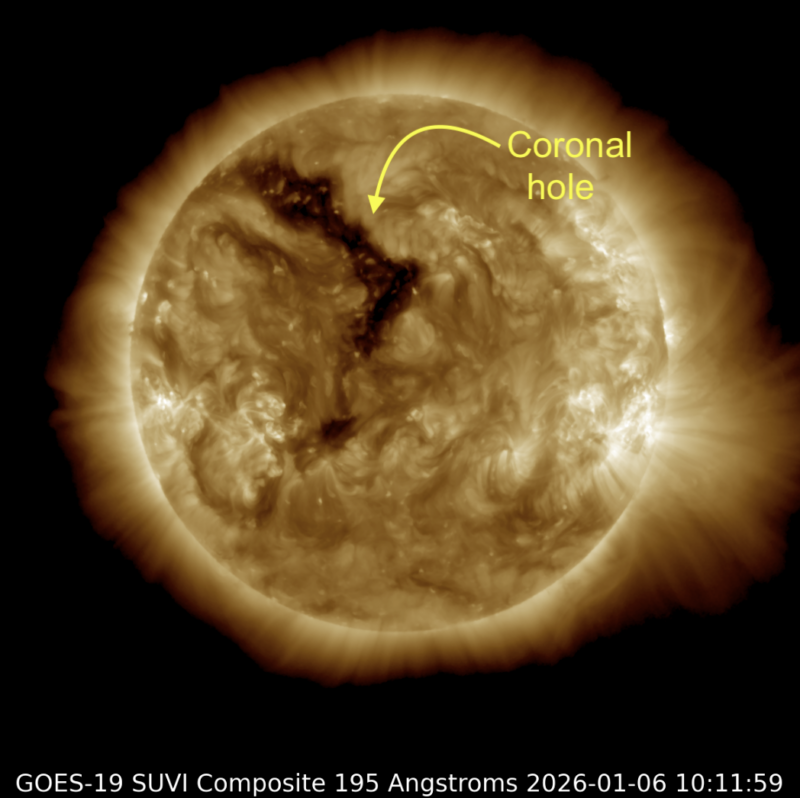
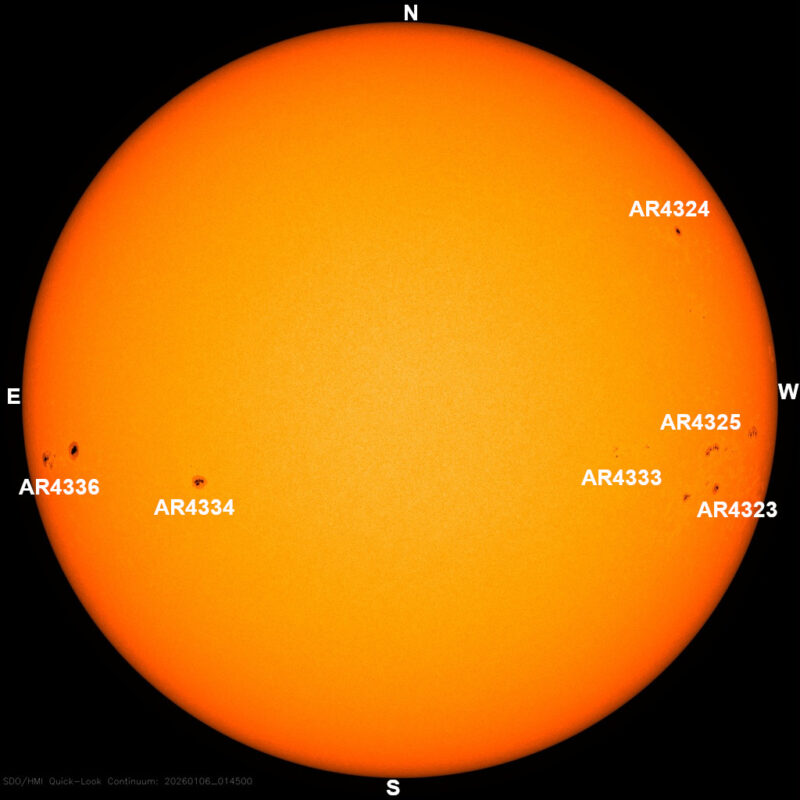
Sun news January 5: Space weather impact less than expected
(11 UTC January 4 – 11 UTC January 5)
A weak coronal mass ejection (CME) brushed past Earth’s magnetic field as anticipated last night. Forecasters had expected this impact to trigger geomagnetic storming, helped by a stream of fast solar wind. However, the CME only disturbed our magnetic field to quiet-to-unsettled levels, bringing just a slight enhancement to auroras across high-latitude regions such as Iceland, northern Norway and northern Canada.
Past 24 hours: The details
- Flare activity: Solar activity remained low-to-moderate, with 14 C-class (common) flares observed during the period.
- Strongest flare: A C3.0 C-class flare from AR4334 at 9:11 UTC on January 5, 2026.
- Lead flare producers: AR4325 and AR4336 were the most consistently active regions, each firing multiple low-level C-class flares, while AR4334 produced the strongest event (C3.0) of the period.
- Sunspot regions: The Earth-facing solar disk displayed seven numbered active regions, with several showing modest complexity and growth.
- AR4323 – Located near the southern hemisphere, this region remained relatively simple and quiet, producing only a single C2.0 flare during the period and showing little structural change.
- AR4324 (beta) showed decay in its intermediate spots and produced a few low-level C flares, indicating weakening flare potential.
- AR4325 (beta-gamma) is the largest region on the disk, and remained the primary engine for common C-class activity. Its mixed magnetic field makes it a candidate for future M-class (moderate) flares.
- AR4333 (beta) continued to elongate, with new intermediate spots emerging. Its flare potential is gradually growing, though it has only produced small C-class events so far.
- AR4334 is still being fully characterized, but has already produced the strongest flare of the day (C3.0). Its current magnetic classification is likely a simple beta, but continued observation is needed as it rotates further onto the disk.
- AR4336 (alpha) is a newly visible region just rotating onto the Earth-facing side. Despite its simple single-spot appearance, it has already fired several C-class flares, suggesting some underlying magnetic activity that may become clearer as it moves into better view.
- Additional small regions and plage areas on the disk remained simple and mostly quiet, contributing little to overall flare production.
- Blasts from the sun? The sun launched no Earth-directed coronal mass ejections (CMEs) during this reporting period.
- Solar wind: The solar wind environment remained only slightly disturbed, consistent with a weak, fading CME influence. Solar wind speeds were mostly steady, near 450 km/s, for much of the period, increasing modestly toward ~500 km/s after about 20:00 UTC on January 4 as the CME influence became more apparent. The total strength of the interplanetary magnetic field (IMF) hovered between 4–7 nT for most of the interval, briefly strengthening to about 10 nT around 20:00–20:30 UTC on January 4. The crucial north–south component, Bz, fluctuated between about +5 and -3 nT during most of the day, then tipped more firmly southward to around -7 nT with the CME’s arrival near 20:30 UTC. This southward turn opened the door for solar wind energy to couple into Earth’s magnetic field, but the interval was relatively short-lived and moderate in strength. Overall, conditions were mildly favorable for aurora at high latitudes but insufficient for significant mid-latitude displays.
- Earth’s magnetic field: Earth’s magnetic field ranged from quiet to unsettled, with no significant storming. NOAA reported global geomagnetic activity at quiet-to-unsettled levels through the period, consistent with Kp values generally in the 0–3 range. The brief interval of stronger southward Bz (to about -7 nT) following the CME arrival late on January 4 was not sufficient to push conditions into a clear G1 (minor) geomagnetic storm, but it likely enhanced auroral activity over the polar regions and high-latitude locations such as Iceland, northern Norway and northern Canada.
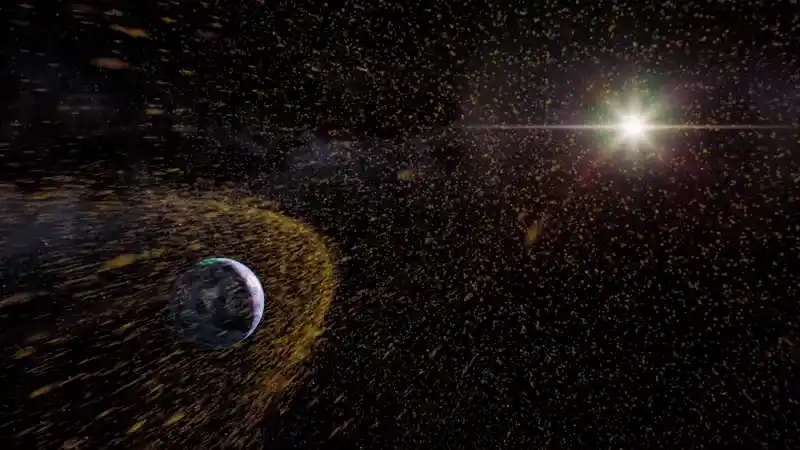
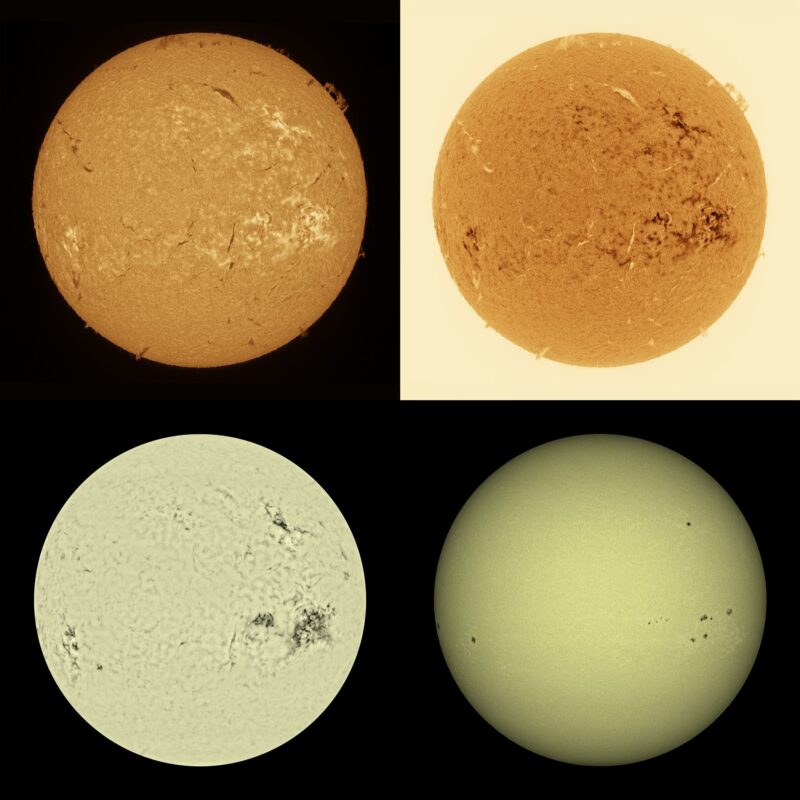
The sun in recent days
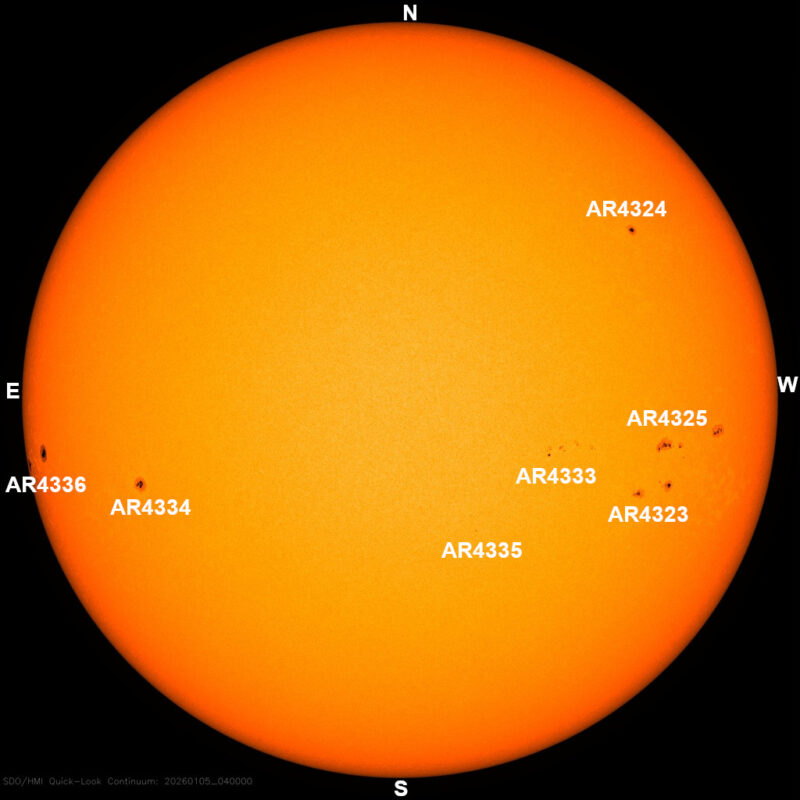
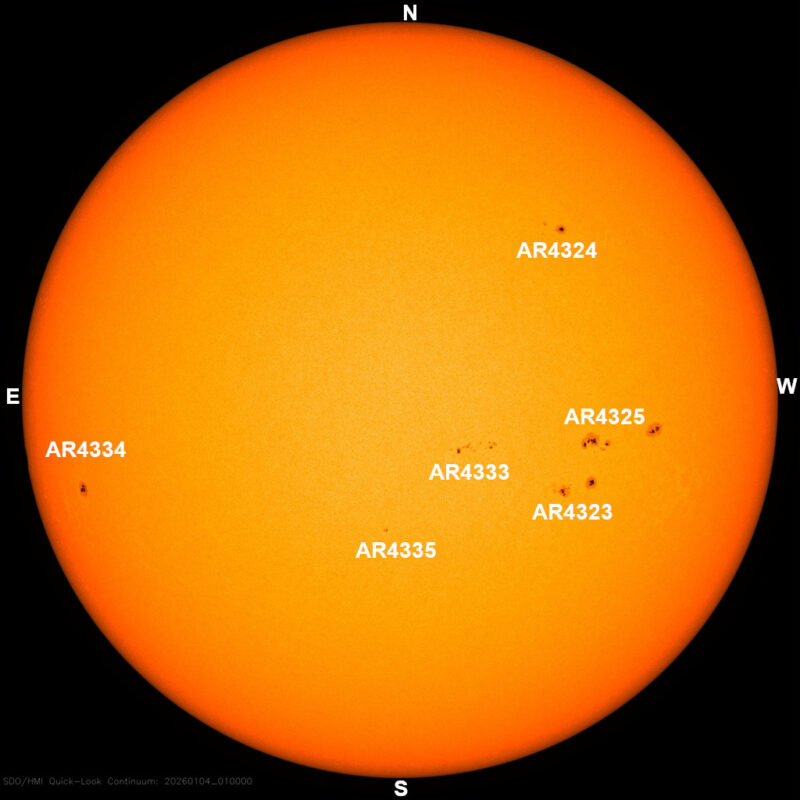
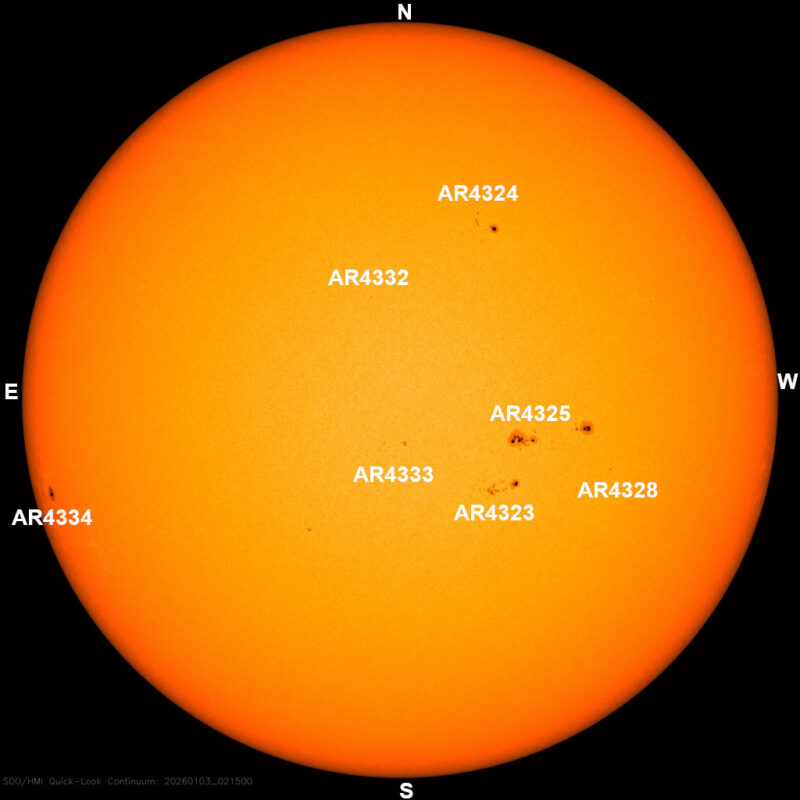
Sun images from our community
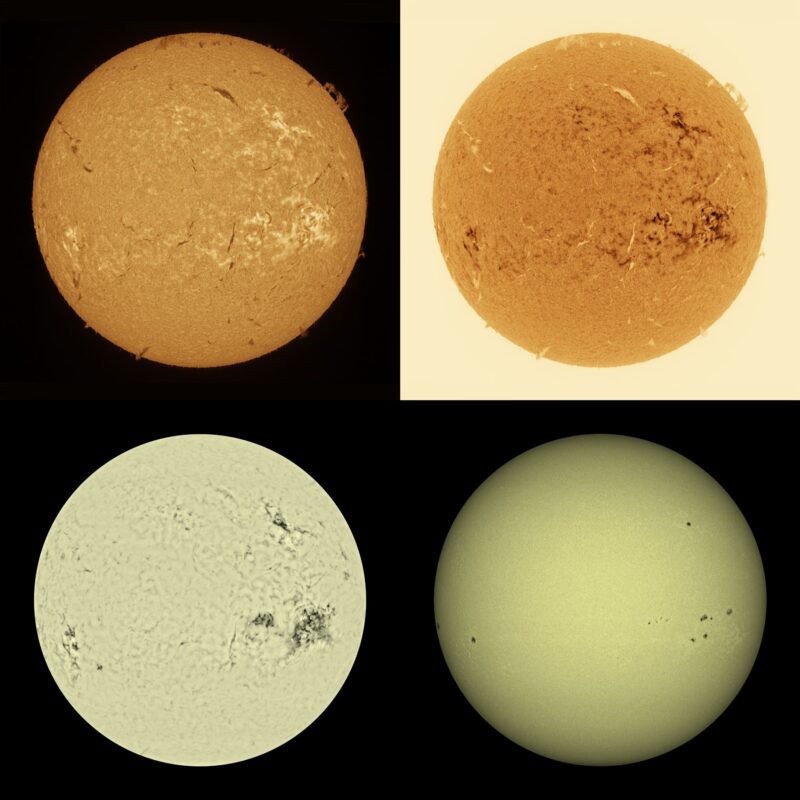
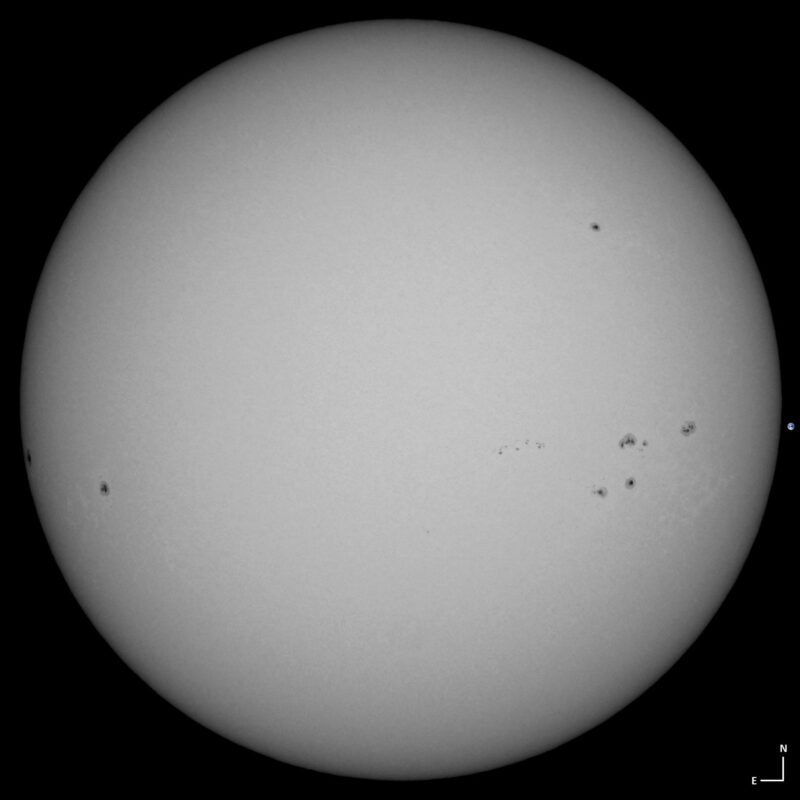
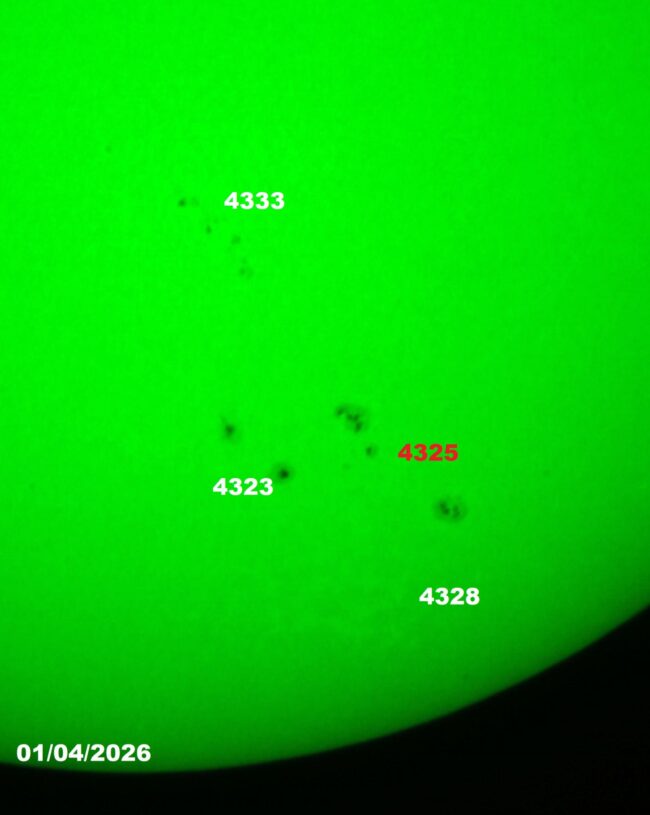
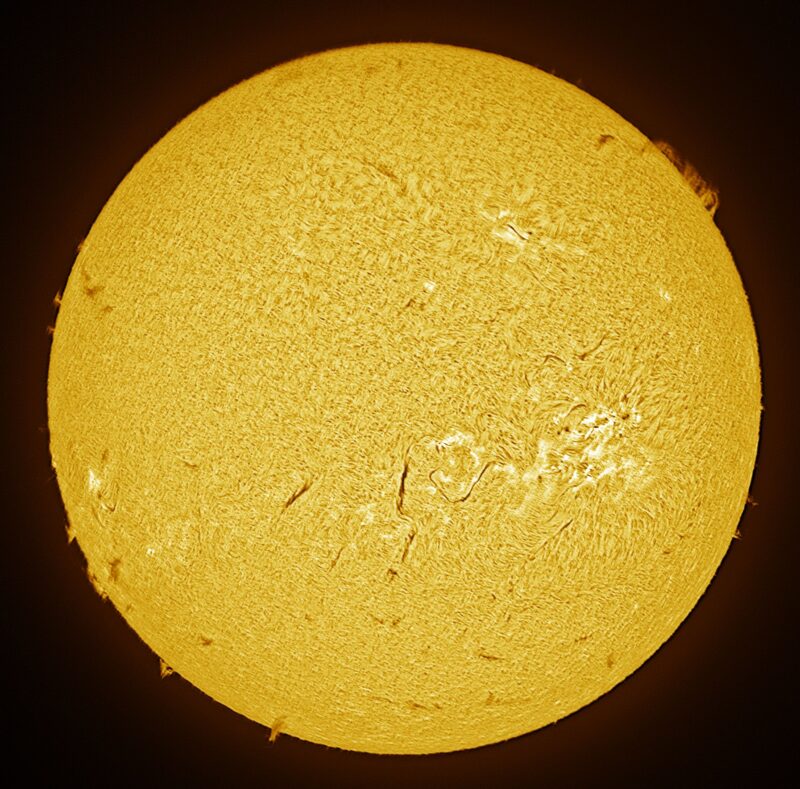
We sometimes feature sun images obtained using hydrogen-alpha filters. Read why.
Bottom line: Sun news January 6, 2026: Venus is dazzling in the SOHO spacecraft’s view during the planet’s superior conjunction, with Mars approaching nearby.











